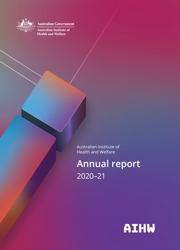Aboriginal and Torres Strait Islander Stolen Generations – ‘the gap within the gap'
Our challenge
Improving data on Stolen Generations survivors
The Stolen Generations refer to the Aboriginal and Torres Strait Islander children removed from their families, based on policies legislated in every jurisdiction in Australia between approximately 1910 and 1972, when the legislation specific to Indigenous children was repealed in all jurisdictions. Although Indigenous children continued to be removed after 1972 under other legislation, this year was used to estimate the numbers of children who comprise the Stolen Generations. It is believed that up to one-third of all Indigenous children were forcibly removed from their families and communities during this period.
Previous analysis by the AIHW has shown that the Stolen Generations survivors are a particularly disadvantaged group within the Indigenous Australian population. By 2022, all Stolen Generations survivors will be aged 50 and over. At this age, Indigenous Australians become eligible for aged care services, reflecting the earlier onset of ageing-related conditions in this population.
Our response
Highlighting the needs of a highly disadvantaged group
Data from the 2018–19 National Aboriginal and Torres Strait Islander Health Survey were used to estimate the number and geographical distribution of Stolen Generations survivors aged 50 and over. In addition, we compared outcomes for this group with those for Indigenous Australians who were not removed.
The results were released on 2 June 2021 in an address at the National Press Club along with the launch of the Healing Foundation report Make healing happen: it’s time to act.
Our results
Data that support informed responses
The analysis showed that there were an estimated 27,200 Stolen Generations survivors aged 50 and over in 2018–19, representing around 1 in 5 Indigenous Australians of this age. Almost 3 in 5 were women, and most (81%) lived in non-remote areas.
Compared with other Indigenous Australians aged 50 and over who were not removed, Stolen Generations survivors were more likely to have:
- poor mental health
- a severe or profound disability
- experienced violence
- experienced discrimination in the previous 12 months.
They were also more likely to rely on government payments and less likely to be homeowners or to live in a household that could raise funds in an emergency.
This report provides important data on the ‘gap within the gap’; that is, the additional disadvantage experienced by Stolen Generations survivors compared with Aboriginal and Torres Strait Islander people who were not removed. Understanding this experience is important to ensure Stolen Generations survivors can access appropriate health, disability, welfare and other services as they age. Healing Foundation CEO Ms Fiona Cornforth stated: ‘This data is hugely beneficial as we work towards healing for Stolen Generations survivors and their descendants’.



